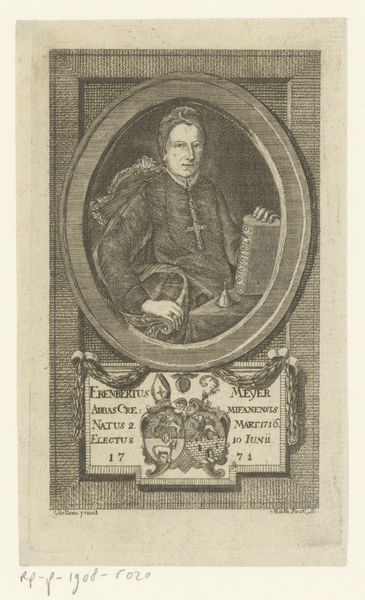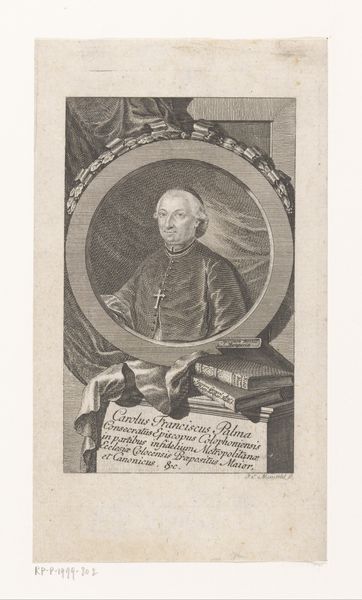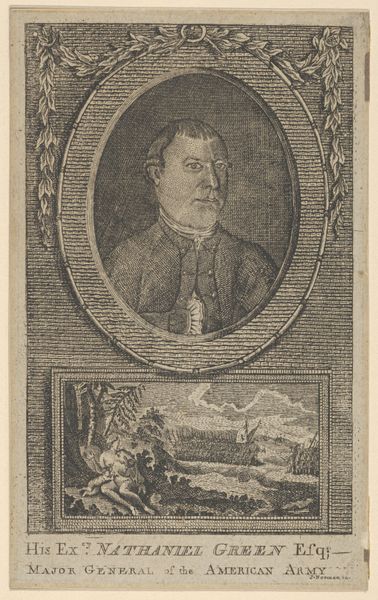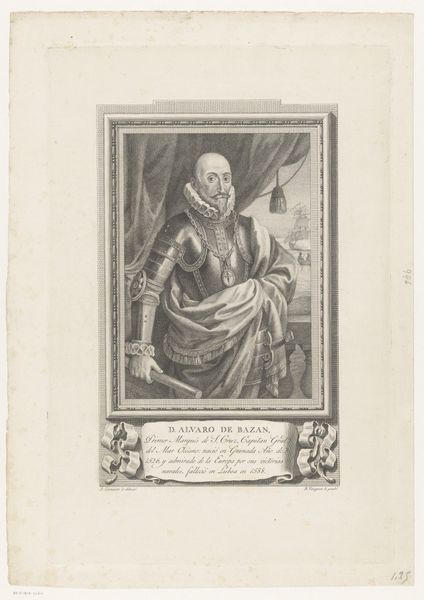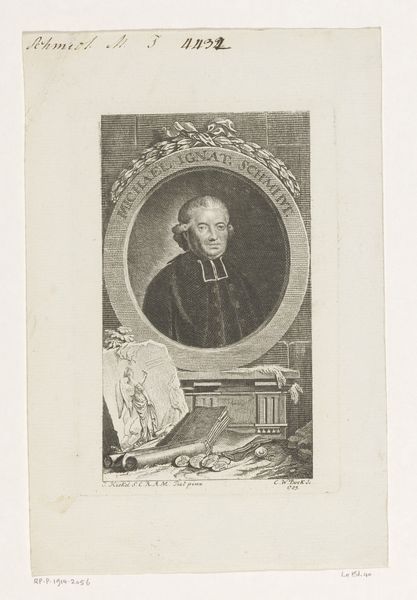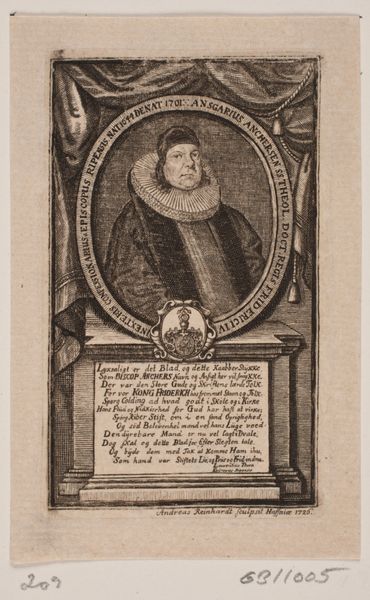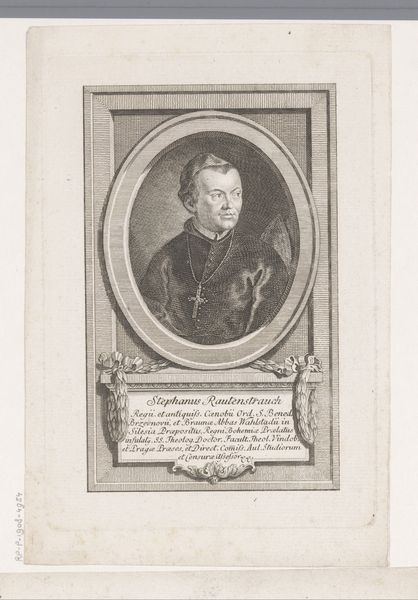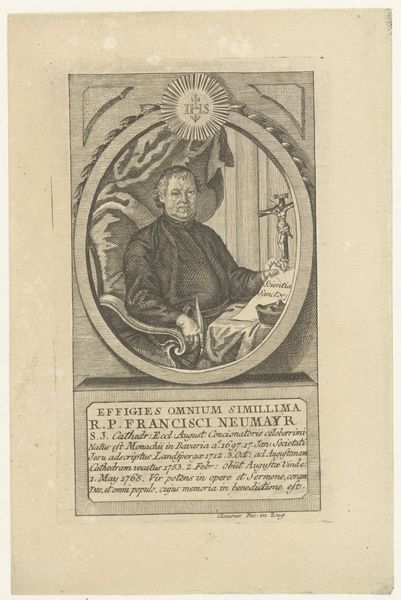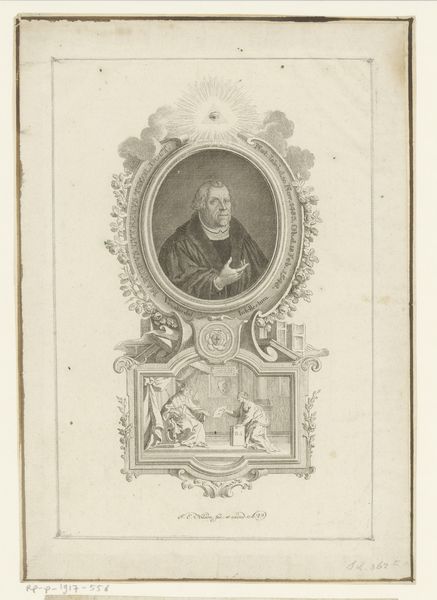
Dimensions: height 158 mm, width 90 mm
Copyright: Rijks Museum: Open Domain
Curator: The somber, almost spectral quality to this portrait truly captures your attention. Editor: Absolutely, that skull gives me the shivers. A stark reminder of mortality staring right back at you! But let's get to it. Georg Heinrich Werner created this engraving of Placidus Muth sometime between 1785 and 1789. It’s currently held at the Rijksmuseum. Curator: The inclusion of the skull and books definitely anchors this image with established symbolism—death, wisdom, knowledge... The objects tell us so much. Editor: More than just personal iconography. As Abbot, Muth probably used visual cues to solidify institutional power. I mean, he wants you to remember the Church *and* the transient nature of earthly life! A bit on the nose, wouldn't you say? Curator: The Baroque loved that drama! The oval frame, draped curtain, ecclesiastical garb—these details communicate specific messages about identity and order. Even the meticulousness of the engraving conveys precision and hierarchy. Editor: All true, and the text etched into the bottom lends even more context. Look closely, it outlines Muth’s multiple roles, which emphasize the institutional layers he represents: Abbot of the Monastery, Theological Assessor, University Rector. No room for modesty, it seems! Curator: Well, these formal conventions create an enduring portrait—a vessel carrying cultural memory beyond an individual. Look at the geometric construction of his gaze in conjunction with the skull and his garments. What is time within such precise lines? Editor: What is time? Ha! Always a question for us. I find this image really revealing in terms of power structures inherent in religious and academic life during that time period. It seems deliberately crafted to ensure this guy would not be forgotten. And, well, we're here talking about him, centuries later. Curator: Right, his persona solidified into art; perhaps an early form of what we now consider image crafting and media shaping. What endures after us? The question embedded within. Editor: Indeed, maybe he would be surprised we're focusing less on his holy wisdom and more on how skillfully he branded his image. A final layer of irony to consider!
Comments
No comments
Be the first to comment and join the conversation on the ultimate creative platform.
